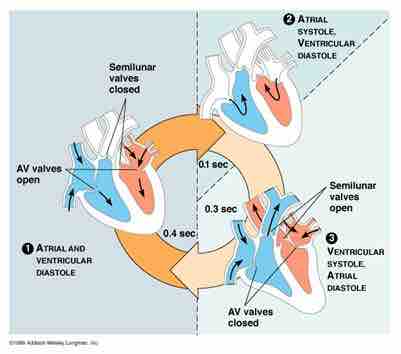The Heart and its Parts
The heart is made up of four chambers. Two atria at the top of the heart receive blood and two ventricles at the bottom of the heart pump blood out of the heart. The septum divides the left and right side of the heart, while the valves of the heart ensure that blood only flows in one direction.They include the tricuspid valve-found between the right atrium and the right ventricle-and the mitral valve-found between the left atrium and the left ventricle. The list of heart valves also includes the semi-lunar valves, which are located at the bottom of the aorta and pulmonary artery. Strong tendinous chords attached to valves prevent them from turning inside out when they close.
The human heart will undergo over 3 billion contraction cycles during a normal lifetime. A complete cardiac cycle is one round of the heart pumping blood and consists of two parts: systole (contraction of the heart muscle) and diastole (relaxation of the heart muscle). During the cycle, the top half of the heart works as one unit, while the bottom half of the heart works as one unit.
The heart beat can be heard as a sound that the valves make when they close. The ‘lub' sound is made when the atrio ventricular valves close and the ‘dub' sound is made when the semi lunar valves close. Blood pressure is produced by the left ventricle contractions.The rhythm of ventricle diastole, often just referred to as diastole, causes the pulse, which can be felt by holding two fingers to the side of the throat.

Cardiac Cycle
The heart pumps blood through the body.